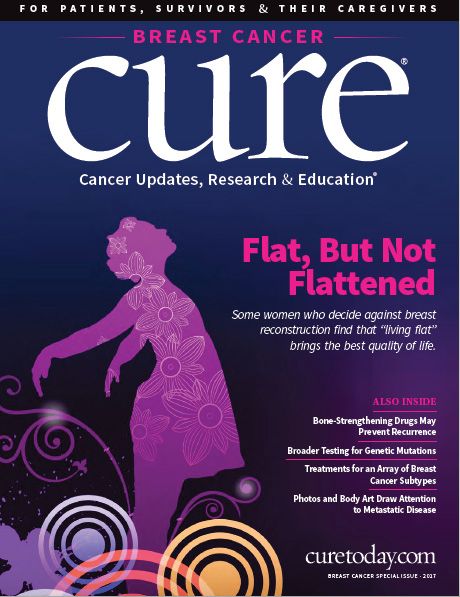Publication
Article
CURE
A La Carte Options to Treat Breast Cancer
Author(s):
After surgery, some young women with hormone-driven breast cancer can use estrogen blockers but opt against induced menopause.
POST-SURGICAL TREATMENT FOR hormone-driven breast cancer in younger women usually takes a similar course as the therapy given to older women, but studies are finding that the suppression of ovarian function may not always be needed in those who are premenopausal.
Those results were discussed by Ruth O’Regan, M.D., in September during the 19th Annual Lynn Sage Breast Cancer Symposium.
Patients tend to experience more side effects when they undergo artificially induced menopause, and some research suggests it may have a negligible effect on the success of treatment, said O’Regan, division chief of hematology and medical oncology at the University of Wisconsin School of Medicine and Carbone Cancer Center.
About one in five new cases of breast cancer between 2009 and 2013 were in women under 50, according to national data. The overall post-surgical regimen recommendations are currently the same for premenopausal and postmenopausal women who have estrogen receptor-positive disease, except that for the younger group, they include ways to preserve fertility and minimize side effects from longer-term use of tamoxifen or other agents.
O’Regan reviewed research for several post-surgical regimens, including tamoxifen alone, tamoxifen with ovarian function suppression (through removal of the ovaries, radiation or the use of luteinizing hormone-releasing hormone agonists), and the combination of another kind of estrogen blocker, exemestane, with ovarian function suppression. Results of the SOFT and TEXT trials showed that the regimens were similar in effectiveness among women who had not had chemotherapy, but that they differed significantly when it came to the number of reported side effects.
Exemestane was associated with more musculoskeletal problems and osteoporosis, two side effects that O’Regan said are particularly problematic for younger women who may be on these treatment regimens for much longer periods of time.
The SOFT study specifically compared tamoxifen with and without ovarian suppression. The five-year freedomfrom- breast cancer rate was 95.8 percent for those treated with tamoxifen alone versus 95.1 and 97.1 percent for those treated with tamoxifen or exemestane plus ovarian suppression.
In the three groups, respectively, there were six, seven and three distant recurrences at five years.
Although there was almost no difference in freedomfrom- breast cancer or freedom-from-distant-recurrence rates among women who had not received chemotherapy, ovarian function suppression significantly increased the risk of hot flashes, sweating, insomnia, osteoporosis and hypertension, among other symptoms.
O’Regan noted that patients who undergo induced menopause might be at risk of developing premature coronary artery disease, as well.
However, for women who had received chemotherapy, both studies showed clear improvement in recurrence rates from including ovarian function suppression as part of the post-surgical regimen.
Those treated with tamoxifen alone had a 78 percent five-year freedomfrom- breast cancer rate compared with 82.5 percent and 85.7 percent for those treated with ovarian suppression and tamoxifen or exemestane, respectively.
The freedom from distant recurrence rate was 83.6 percent with tamoxifen alone and 84.8 and 87.8 percent for those treated with ovarian suppression and tamoxifen or exemestane, respectively. Compared with tamoxifen alone, these results were statistically significant.
“Given the added toxicities (of ovarian function suppression), we need a better way of working out which patients need this approach,” O’Regan said.
Several areas still require additional research, O’Regan pointed out, specifically when it comes to biomarkers for identifying the younger women who will benefit from ovarian function suppression. The progesterone receptor and the Ki-67 protein have both shown some promise as biomarkers, but more work is needed.
Additionally, she noted, 10 years of endocrine therapy, which has been shown to be superior to five years, has not yet been compared to ovarian function suppression plus endocrine therapy, also warranting further study.





